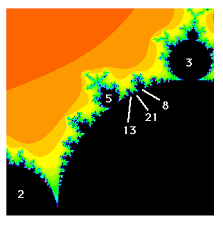Pigeons, Partridges and Sparrows:
"A certain man buys 30 birds which are partridges, pigeons and sparrows, for 30 denari.
A partridge he buys for 3 denari, a pigeon for 2 denari, and 2 sparrows for 1 denaro, namely 1 sparrow for 1/2 denaro.
It is sought how many birds he buys of each kind?"
With apologies to Leonardo, in keeping with the theme of this series, we are changing a few minor details but keeping the spirit of the simultaneous equation:
A man pays 30 'scouts' for cleaning up his garden during "Bob a Job week" (back in the 80s!) including Rovers, Venturers, and Cubs, and pays in total $30.
The Rovers he pays $3, the Venturers $2, and each pair of Cubs he gives $1, (50c per Cub).
How many 'scouts' did he pay in total?
A maths student can get going by letting R stand for the number of Rovers, V for Venturers, and C for Cubs. Then, since 30 scouts were paid in total, we know that R + V + C = 30. And, since the jobs cost $30 in total, it follows that 3R + 2V + C/2 = 30
We also know that he paid a quantity to each (no zero values) and assuredly no half jobs were done or fractions of scouts participated!
your mission should you chose to accept it is to first solve this!
It was Fibonacci's arithmetic even more than his algebra that was truly revolutionary. Fibonacci imported another brilliant mathematical invention: the Hindu-Arabic numerals.


These are the familiar 1, 2, 3 and so forth, including the all-important 0. They are the building blocks of our now standard base ten notation. Prior to Fibonacci, Europeans calculated almost exclusively with Roman numerals: I, V, X and so on.
This had made arithmetic, and all of mathematics incredibly cumbersome. Apart from the pain of coping with the everyday application of finance and commerce, Roman numerals made any genuine mathematical advance impossible. That all changed after the appearance of
Liber Abbaci (give or take a century or two of stubborn resistance).

Fibonacci was not the first European to write on Arabic mathematics. Indeed, though it seems likely that Fibonacci could read Arabic, it is also certain that when writing
Liber Abbaci he referred to existing translations of Arabic texts.
Moreover, Hindu-Arabic numerals first appeared in Europe 250 years earlier (though the 0 took a while longer), in essentially the same form that we see them now.
So, why should Fibonacci get all the credit?
And why did Fibonacci's work have such an impact?
Fibonacci was a superb mathematician, but his book was not written for the few scholars of the time. Rather, Fibonacci wrote a textbook, a manual for the thousands who had a practical use for the mathematics. Fibonacci sold the new mathematics to the merchants and tradesmen.

 And what of the Fibonacci sequence in all this?
And what of the Fibonacci sequence in all this?
It was nothing more than a simple example, a bit of light relief between the more serious problems.
Moreover, the
"Fibonacci numbers" had been discovered and rediscovered a number of times, beginning at least 1500 years before.
So, the one piece of mathematics for which Fibonacci is universally known is not even his, BUT is microscopic in comparison to his genuine contribution, of which few are aware.
Who knew mathematical fame came with a sense of irony!
Referenced as an expigated Quote almost verbatim from:
Burkard Polster who teaches mathematics at Monash and is the university's resident mathemagician, mathematical juggler, origami expert, bubble-master, shoelace charmer, and Count von Count impersonator.
Marty Ross is a mathematical nomad. His hobby is smashing calculators with a hammer.
Keith Devlin is an English mathematician residing in America. He is a very well known (and accomplished) populariser of mathematics.
Puzzle to Ponder: Can you solve Fibonacci's bird problem for R, V & C?
And the 15th and 16th numbers in his famous sequence =A, B
S 37° 46.B+10-(VxC)+R
E 145° 08.A-(Cx17)+R
Test your workings AND get the final piece of the puzzle!
